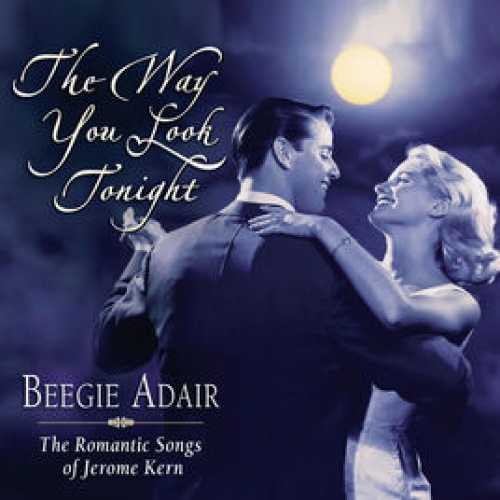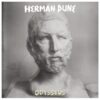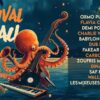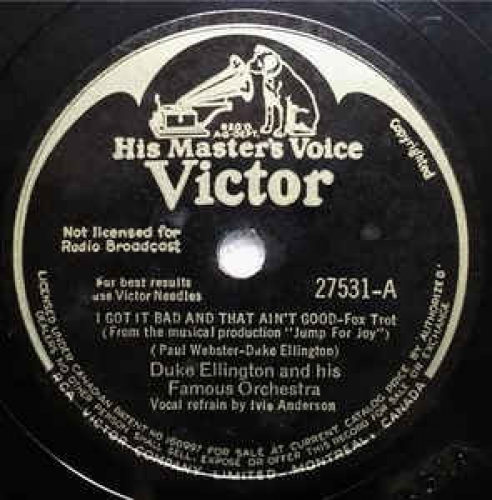
Watermelon Man

-
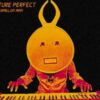 play_arrow
play_arrow
Watermelon Man Divergence
Watermelon Man est un standard de jazz composé par Herbie Hancock, issu de son premier album Takin’ Off en 1962. Herbie Hancock en a également donné une version funk dans l’album Head Hunters de 1973.n C’est un véritable « tube » musical, qui est entré dans le Top 100 des pop charts. Le riff de piano, la mélodie et la structure basée sur le blues l’ont rendu très adaptable à d’autres styles de musiques; il en existe même une version disco sortie en 1979.n Ltitre repris par de nombreux artistes, dont Mongo Santamaría en 1963 et Poncho Sanchez en 1996. Il a été enregistré plus de 200 fois1. Des samples ont été utilisés par plus de 50 artistes, dont Madonna et George Michael.n nnn Herbert « Herbie » Jeffrey Hancock, né le 12 avril 1940 à Chicago (États-Unis), est un pianiste, claviériste et compositeur de jazz. Il est l’un des musiciens de jazz les plus importants et influents. Il a mêlé au jazz des éléments de soul, de rock, de funk, de disco ainsi que, parfois, quelques rythmes issus du rap.n Herbie Hancock a joué avec de nombreux grands jazzmen dans les années 1960 et a rejoint le Miles Davis quintet, avec lequel il a redéfini le rôle de la section rythmique. Il a également été un des premiers à utiliser les synthétiseurs et le scratch. Malgré ses expérimentations, la musique d’Herbie Hancock est restée mélodique et accessible, rencontrant parfois des succès commerciaux, avec en particulier les morceaux Cantaloupe Island, Watermelon Man, Chameleon et Rockit.n ExtraitsnnnTalkin’Off Blue note 1962nn
- Herbie Hancock — piano
- Freddie Hubbard — trompetteDexter Gordon — saxophone ténor
- Butch Warren — contrebasse
- Billy Higgins — batterie
n nn Mongo Santamaria Tico Records 1963n Ramón « Mongo » Santamaría (7 avril 1922 à La Havane – 1er février 2003 (à 80 ans) à Miami) était un percussionniste cubain. En 1950 il a déménagé à New York où il a joué avec les premiers big band de jazz afro-cubain et de salsa tels que Perez Prado, Tito Puente, Cal Tjader, Fania All Stars, etc.n nn nThe Headhunters 1973n Hancock re-recorded the tune for Head Hunters (1973), combining synthesizers with a Sly Stone and James Brown funk influence, adding an eight-bar section. Hancock described his composition « Chameleon », also from Head Hunters, to Down Beat magazine in 1979: « In the popular forms of funk, which I’ve been trying to get into, the attention is on the rhythmic interplay between different instruments. The part the Clavinet plays has to fit with the part the drums play and the line the bass plays and the line that the guitar plays. It’s almost like African drummers where seven drummers play different parts »; « Watermelon Man » shares a similar construction. A live version was released on the double LP Flood (1975), recorded in Japan.nnOn the intro and outro of the tune, percussionist Bill Summers blows into a beer bottle imitating hindewhu, a style of singing/whistle-playing found in Pygmy music of Central Africa. Hancock and Summers were struck by the sound, which they heard on the ethnomusicology LP, The Music of the Ba-Benzélé Pygmies (1966), by Simha Arom and Genviève Taurelle.n nnn The Woody Herman big band 1963n Solos: Sal Nistico, Bill Chase, Henry Southall; nArranged by Nat Pierce; Woody Herman – cl, as, leader; Billy Hunt, Dave Gale, Bill Chase, Gerry Lamy, Paul Fontaine – tpt; Bob Rudolph, Phil Wilson, Henry Southall – tb; Sal Nistico, Bobby Jones, Bill Perkins – ts; Frank Hittner – bs; Nat Pierce – p; Chuck Andrus – b; Jake Hanna – dnRecorded May 19-21, 1963 at Basin Street East, Los Angeles, CAn Woody Herman (1913-1987) de son vrai nom Woodrow Charles Herman, était un clarinettiste, saxophoniste (alto & soprano), chanteur et chef d’orchestre de jazz américain.n nnn Latin soul 1999n Poncho Sanchez (né le 30 octobre 1951) est un artiste de Latin jazz, un chanteur de salsa, un chef d’orchestre et un conguero.n Poncho Sanchez est né à Laredo au Texas et a grandi à Norwalk, Californie.n Il a été musicalement influencé par la musique Afro-Cubaine (mambo, son, cha-cha-cha, rumba, guaracha, salsa) et ses artistes (Tito Puente, Mongo Santamaria, Manny Oquendo…), mais aussi par le jazz bebop, avec des artistes comme Charlie Parker. À l’origine guitariste, on a découvert son talent de chanteur lors d’une audition pour un groupe de R&B.Au lycée, il a appris à jouer flûte, batterie et timbales avant de décider finalement de se spécialiser dans les congas.En 1975, à 23 ans, l’idole de Sanchez, le vibraphoniste Cal Tjader, l’invite à rejoindre son groupe. En 2000, Sanchez et son orchestre ont gagné le Grammy Award du meilleur album de latin jazz (Latin Soul sur le label Concord Picante Records).n Il a collaboré avec Cal Tjader, Mongo Santamaria, Tower of Power, Maceo Parker entre autres.n n Woody Herman The Raven Speaks 1972n n Dee Dee Bridgewater Jazz à St Germain 1989n n Dee Dee Bridgewater, de son vrai nom Denise Eileen Garret, née le 27 mai 1950 à Memphis, Tennessee, est une chanteuse de jazz américaine.n Née à Memphis, elle grandit à Flint (Michigan). Son père, Matthew Garret, est trompettiste de jazz et enseigne au collège de Manassas. Denise est très tôt baignée par le jazz. À 16 , elle intègre un trio de rock et rhythm and blues qui donne des concerts dans le Michigan. À partir de 18 , elle étudie à l’université d’État du Michigan, puis à l’université de l’Illinois à Urbana-Champaign.n L’artiste sort son premier album, Dee Dee Bridgewater en 1974, résolument orienté soul et funk. La même année, elle chante dans la comédie musicale The Wizz, à Broadway. En 1975, elle joue le rôle de la « bonne sorcière du nord » dans la comédie musicale Glinda the Good Witch, inspirée du Magicien d’Oz ; pour ce rôle, elle reçoit le prix de meilleure actrice du Tony Award. La comédie musicale remporte également le Grammy Award de la meilleure comédie musicale en 1976.n Elle retourne au jazz ensuite et se produit sur toutes les scènes d’Europe et des USA.n n Michel Camilo – Album : Thru My Eyes (1997) n n Michel Camilo, né le 4 avril 1954 à Saint-Domingue, est un pianiste de jazz originaire de la République dominicaine.n À cinq ans, il compose son premier morceau, et à seize ans il intègre l’Orchestre symphonique national de République dominicaine. À 19 ans, il part pour New York où il approfondit ses études musicales et devient, à partir de la fin des années 1980 un des grands pianistes de jazz et de Latin jazz.n n Carlos Santana-Herbie Hancock live 28 Septembre 1974n avec la bouteille de San Pellegrino MTVn n Will de Ville n Live at Museumsplatz, Bonn, Germany 19th July, 2008 2.20n Willy DeVille (né William Paul Borsey Jr.) est un chanteur, compositeur et acteur américain né le 25 août 1950 à Stamford, Connecticut, mort dans la nuit du 6 au 7 août 20091 d’un cancer du pancréas à New York (États-Unis).n n n n Lambert, Hendricks & Bavan feat. Clark Terry and Coleman HawkinsnAt Newport ’63 (RCA Victor)n n Lambert, Hendricks & Ross were a vocalese trio formed by jazz vocalists Dave Lambert, Jon Hendricks and Annie Ross. The latter, from 1962 to 1964, replaced by vocalist Yolande Bavann The group formed in 1957 and recorded their first album Sing a Song of Basie for ABC-Paramount Records. The album featured versions of Count Basie standards and was successful enough that the Count Basie Orchestra collaborated with them on Sing Along With Basie (1959). Sing a Song of Basie was awarded a Grammy Hall of Fame Award in 1998.n Beginning in 1959, the trio recorded three LPs with Columbia Records. They recorded a version of Ross’s 1952 song « Twisted », featuring her lyrics set to a Wardell Gray melody. Their High Flying album won a Grammy Award for Best Performance by a Vocal Group in 1962. Lambert, Hendricks & Ross were voted Best Vocal Group in the Down Beat Readers Poll from 1959 to 1963.n Annie Ross left the group in 1962, replaced by vocalist Yolande Bavan. The band was renamed Lambert, Hendricks and Bavan and made three live albums before disbanding in 1964. Lambert, Hendricks and Bavan appeared at the 1962 Newport Jazz Festival, and their performances of « Comin’ Home » and « Moanin’ » can be seen in Buddy Bregman’s film The 1962 Newport Jazz Festival.n Any hopes of a reunion of the original trio ended with Lambert’s death in a road accident in Connecticut in 1966.nnnnnDiffusion du lundi 5 juin au vendredi 9 juin / 10h00nRediffusion intégrale samedi 10 juin 11h00nnnAnimation A.VacquiénRéalisation B.Bertrandn n n »

